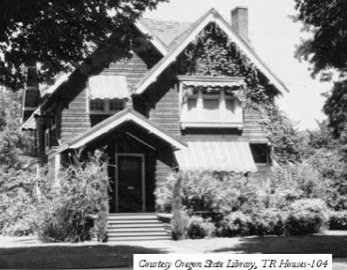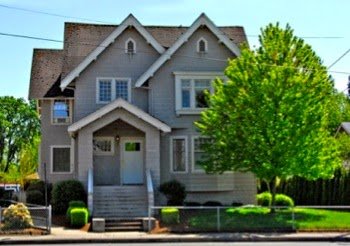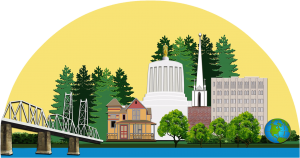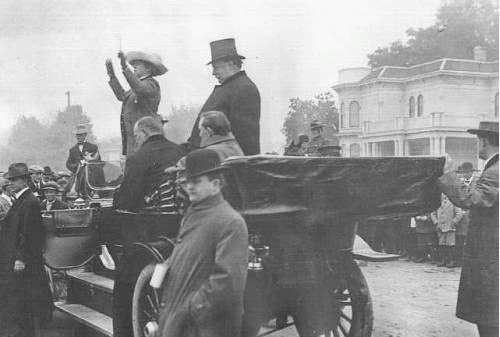World Events
- The Mexican Revolution, led by Madero and Pancho Villa, ends as Porfirio Diaz resigns and flees to France. Political conflict continued until the adoption of a Constitution in 1917 .
- Physician, writer and philosopher Sun-Tat-Sun (known afterward as the Father of the Nation) is elected Provisional President of a democratic government in China as Manchu dynasty falls.
- Marie Curie wins Nobel Prize for chemistry.
- U. S. Supreme Court finds Standard Oil Trust violated Sherman Anti-trust Act. The monopoly broken up and 34 companies established.
- Triangle Shirtwaist Factory fire in New York City kills 146 immigrant (mostly women) workers unable to escape as the doors were locked by owners to prevent unauthorized work breaks.
- Hiram Bingham rediscovers Machu Picchu in Peru.
- Roald Amundsen’s Norwegian expedition reaches the South Pole.
- Bobby Jones wins is first golf title at the age of 9.
- New American Books: Jennie Gerhardt, Theodore Dreiser; Ethan Frome, Edith Wharton; Canzoni, Ezra Pound.
- In this photograph, President William Howard Taft stands in an automobile, surrounded by not-so-Secret Service. In the background is the Eugene Breyman house on the northeast corner of Church and Court Streets, now the site of Statesman Journal. The president appears to be facing the Breyman Brothers Spanish American War Memorial at the entrance to Willson Park. Hallie Parrish Hinges (featured in the 1903 entry) leads a chorus of school children as the president gazes down on the group.
After leaving office, Taft spent his time in seeking world peace through his self-founded “League to Enforce Peace.” In 1921, President Warren G. Harding appointed Taft Chief Justice of the United States, fulfilling Taft’s lifelong dream. Taft served in this capacity until his death in 1930.
When you visit
The Eugene Breyman residence, like that of his brother Werner (a block south), has been demolished. This house, greatly renovated, was moved to Summer Street during the conversation of the original residential block to commercial use. In the 1990s it was demolished for the construction of the State Lands Building.
The 1904 Spanish American memorial remains the Cottage Street gateway into Willson Park. The park was created in 1854 when William Willson, pioneer of the Methodist mission, donated a portion of his land to build the new Oregon territorial capitol building. The capitol would be located in the center of a long, open space designated on Willson’s original plat as “Willson Avenue,” just south of his house on the corner of Court and Capitol streets. (See 1881) It was Willson’s wish to preserve open spaces within the growing town, similar to the village commons in the New England towns. The block between the capitol building and the Marion County Courthouse was declared a public square. It eventually became known as Willson Park.
Other events
 |
| Duniway-Lachmund Home on Court Street, 1911-1930s |
 |
| Present State Street Location, 2014 |
- Louis Lachmund becomes mayor. Due to the construction of the North Capitol Mall in 1937, his home on Court Street was condemned, purchased by Willamette University and moved to the campus. A subsequent move brought it to its present location on State Street. When the Lachmunds left their home, they moved to the Jarman House, a 1929 Spanish Colonial residence designed by Beverly Hills architect Glen McAlister with gardens created by the local landscape firm of Lord and Schryver. This National Register property can be seen on SHINE Gaiety Hill/Bush’s Pasture Park Walking Tour.
- An outstanding social event is the wedding of Margaret Boot to Asahel Bush IV, grandson of the newspaper publisher and founder of Ladd and Bush Bank. Her parents’ home is on Birdshill Drive in South Salem neighborhood. The young couple became parents of Asahel V and Stuart Bush. Margaret died at age of 34 in 1934 after an illness of 3 years.
- D. A. White Warehouse is erected on Front Street. This company had numerous large feed warehouses, including one in Europe, but this the only one that remains a token of that enterprise of the horse-and-buggy era. It is still standing in the same location and can be seen on the SHINE Historic Downtown Walking Tour.
- Eugene Ely, the Bird Man, an aviation pioneer, visits Salem and makes a successful flight. He mounts his fragile machine on Lone Oak track at the fairgrounds, turned on the juice and after skimming along the track, arose from the ground in front of the grandstand. He ascended about 400 feet and raced around the track, first with an automobile and then with a motorcycle. As a final performance, he circled the Capitol Dome. That October he died during a Macon, Georgia exhibition in a crash when his plane was late pulling out of a dive.
In the Capitol Journal:
- Salem’s mayor was arrested for violating a traffic ordinance, His honor was charged with cutting a corner at the intersection of State and Commercial streets. The mayor pleaded that his horse was just a colt and that he could not control it. Judge Elgin remitted the fine and the mayor was richer by a $5 gold piece.
- Buren and Hamilton, Salem household furnishers, advertised heating stoves from $1.50 up. Their carbon heaters for both coal and wood were supplied with heavy grates and extra-heavy cast iron fire pots. All had large mica doors in front, giving the effect of an open fire. They were neat and free from superfluous trimmings.
- Barnes Cash Store offered old Civil War Springfield rifles of 45-70 calibers with a bayonet for $1.50. “A very appropriate decoration for Memorial Day”.
- Secretary of State Olcott desired to oust State Printer Duniway from the Capitol. he requested an opinion from Attorney General Crawford on the subject. Crawford ruled that the state printer was occupying his quarters without authority, but so were the secretary of state, the state treasurer, the governor and the Supreme Court.
(See Ben Maxwell’s Salem, Oregon, edited by Scott McArthur, 2006.)

